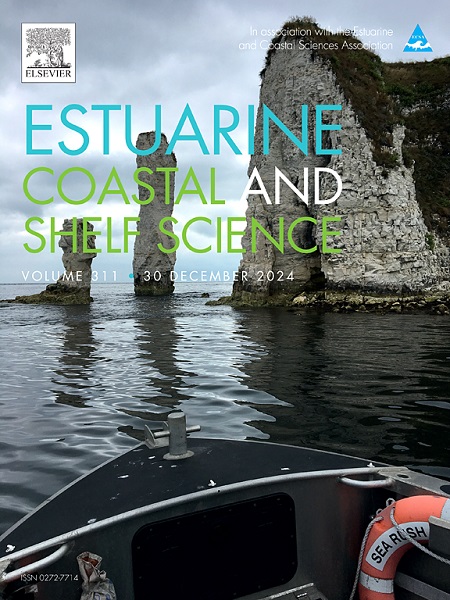扩大温带红树林的碳捕获
IF 2.6
3区 地球科学
Q1 MARINE & FRESHWATER BIOLOGY
引用次数: 0
摘要
红树林提供广泛的生态系统服务,使人类和自然都受益。虽然许多国家在过去50年里失去了近50%的红树林,但由于土地利用变化和城市化带来的沉积物增加,新西兰的红树林在许多地方正在迅速扩大。在奥克兰地区,自1940年以来红树林面积增加了4.5倍,我们量化了7个红树林扩张点的蓝碳固存效益。我们的研究结果表明,新西兰的红树林每年吸收86,000吨二氧化碳,由于红树林的扩张,到2020年还会额外吸收3,400吨二氧化碳。具体而言,奥克兰地区红树林的碳固存量已从1940年的7700吨二氧化碳年- 1增加到2020年的34600吨二氧化碳年- 1,相当于该地区目前林业、渔业和采矿业排放量的50%。尽管新西兰红树林的扩张可能会影响人们认为的沿海舒适价值,但它们作为重要碳汇的作用对于减少全球碳排放和支持该国对《巴黎协定》的承诺至关重要。然而,像许多其他国家一样,新西兰尚未将红树林碳封存纳入其国家政策和管理战略。下一步,我们建议:1)将蓝碳纳入国家温室气体清单;2)监测红树林扩张及其可能的驱动因素;3)与当地社区合作,更好地理解扩大红树林的社会生态价值冲突。本文章由计算机程序翻译,如有差异,请以英文原文为准。
Carbon capture by expanding temperate mangrove forests
Mangrove forests provide a wide range of ecosystem services that benefit both people and nature. While many countries have lost nearly 50 % of their mangroves in the past 50 years, Aotearoa New Zealand's mangroves are rapidly expanding in many locations due to increased sediment inputs from land-use changes and urbanisation. In the Auckland region, where mangrove extent has increased 4.5-fold since 1940, we quantified the blue carbon sequestration benefits from seven mangrove expansion sites. Our results indicate that New Zealand's mangroves sequester 86,000 t CO2 annually, with an additional 3,400 t CO2 sequestered in 2020 due to mangrove expansion. Specifically, mangrove carbon sequestration in the Auckland region has risen from 7,700 t CO2 yr−1 in 1940 to 34,600 t CO2 yr−1 in 2020 - equivalent to 50 % of the region's current emissions from forestry, fishing, and mining. Although the expansion of New Zealand's mangroves may impact perceived coastal amenity values, their role as significant carbon sinks is critical for mitigating global carbon emissions and supporting the country's commitments to the Paris Agreement. However, like many other countries, New Zealand has yet to include mangrove carbon sequestration in its national policies and management strategies. To move forward, we recommend: 1) integrating blue carbon into the national greenhouse gas inventory; 2) monitoring mangrove expansion and its likely drivers; and 3) working with local communities to better understand conflicting socio-ecological values of expanding mangrove forests.
求助全文
通过发布文献求助,成功后即可免费获取论文全文。
去求助
来源期刊
CiteScore
5.60
自引率
7.10%
发文量
374
审稿时长
9 months
期刊介绍:
Estuarine, Coastal and Shelf Science is an international multidisciplinary journal devoted to the analysis of saline water phenomena ranging from the outer edge of the continental shelf to the upper limits of the tidal zone. The journal provides a unique forum, unifying the multidisciplinary approaches to the study of the oceanography of estuaries, coastal zones, and continental shelf seas. It features original research papers, review papers and short communications treating such disciplines as zoology, botany, geology, sedimentology, physical oceanography.

 求助内容:
求助内容: 应助结果提醒方式:
应助结果提醒方式:


